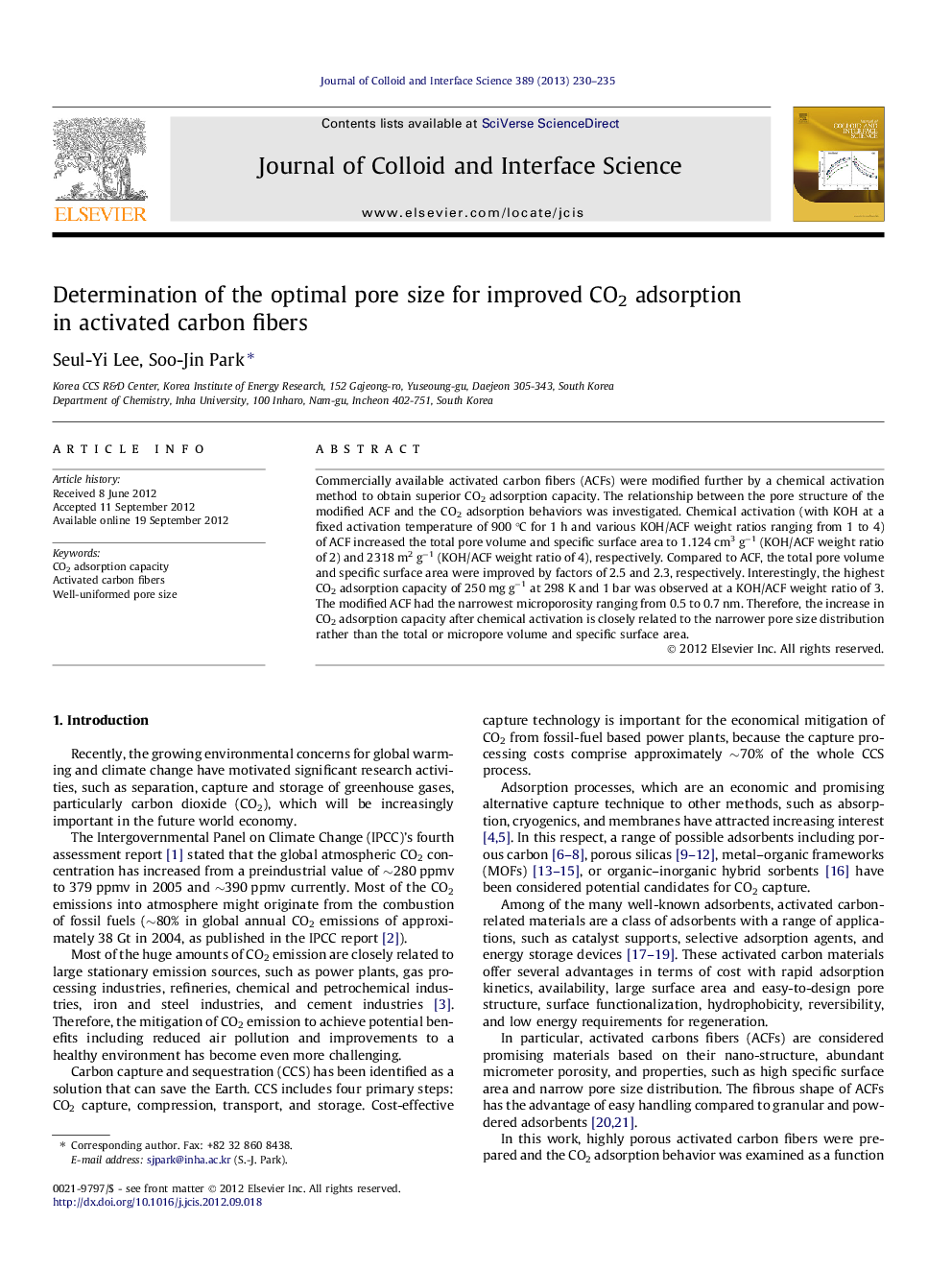| کد مقاله | کد نشریه | سال انتشار | مقاله انگلیسی | نسخه تمام متن |
|---|---|---|---|---|
| 607948 | 880564 | 2013 | 6 صفحه PDF | دانلود رایگان |

Commercially available activated carbon fibers (ACFs) were modified further by a chemical activation method to obtain superior CO2 adsorption capacity. The relationship between the pore structure of the modified ACF and the CO2 adsorption behaviors was investigated. Chemical activation (with KOH at a fixed activation temperature of 900 °C for 1 h and various KOH/ACF weight ratios ranging from 1 to 4) of ACF increased the total pore volume and specific surface area to 1.124 cm3 g−1 (KOH/ACF weight ratio of 2) and 2318 m2 g−1 (KOH/ACF weight ratio of 4), respectively. Compared to ACF, the total pore volume and specific surface area were improved by factors of 2.5 and 2.3, respectively. Interestingly, the highest CO2 adsorption capacity of 250 mg g−1 at 298 K and 1 bar was observed at a KOH/ACF weight ratio of 3. The modified ACF had the narrowest microporosity ranging from 0.5 to 0.7 nm. Therefore, the increase in CO2 adsorption capacity after chemical activation is closely related to the narrower pore size distribution rather than the total or micropore volume and specific surface area.
Figure optionsDownload high-quality image (155 K)Download as PowerPoint slideHighlights
► ACF was modified further by a chemical activation method.
► Compared to ACF, the SBET was improved by factors of 2.5 (ACFK-4).
► The highest CO2 adsorption capacity of 250 mg g−1 at 298 K and 1 bar (ACFK-3).
► CO2 adsorption capacity is closely related to the narrower pore size distribution.
Journal: Journal of Colloid and Interface Science - Volume 389, Issue 1, 1 January 2013, Pages 230–235